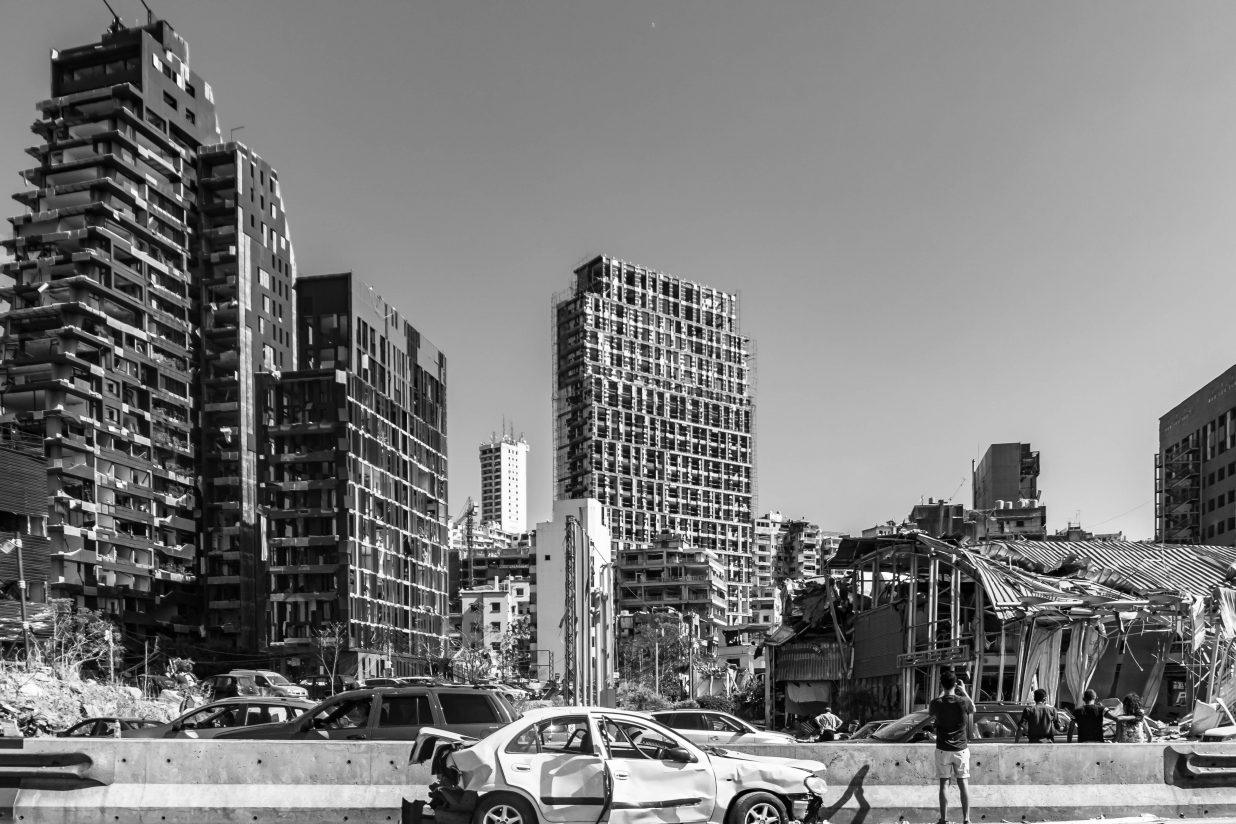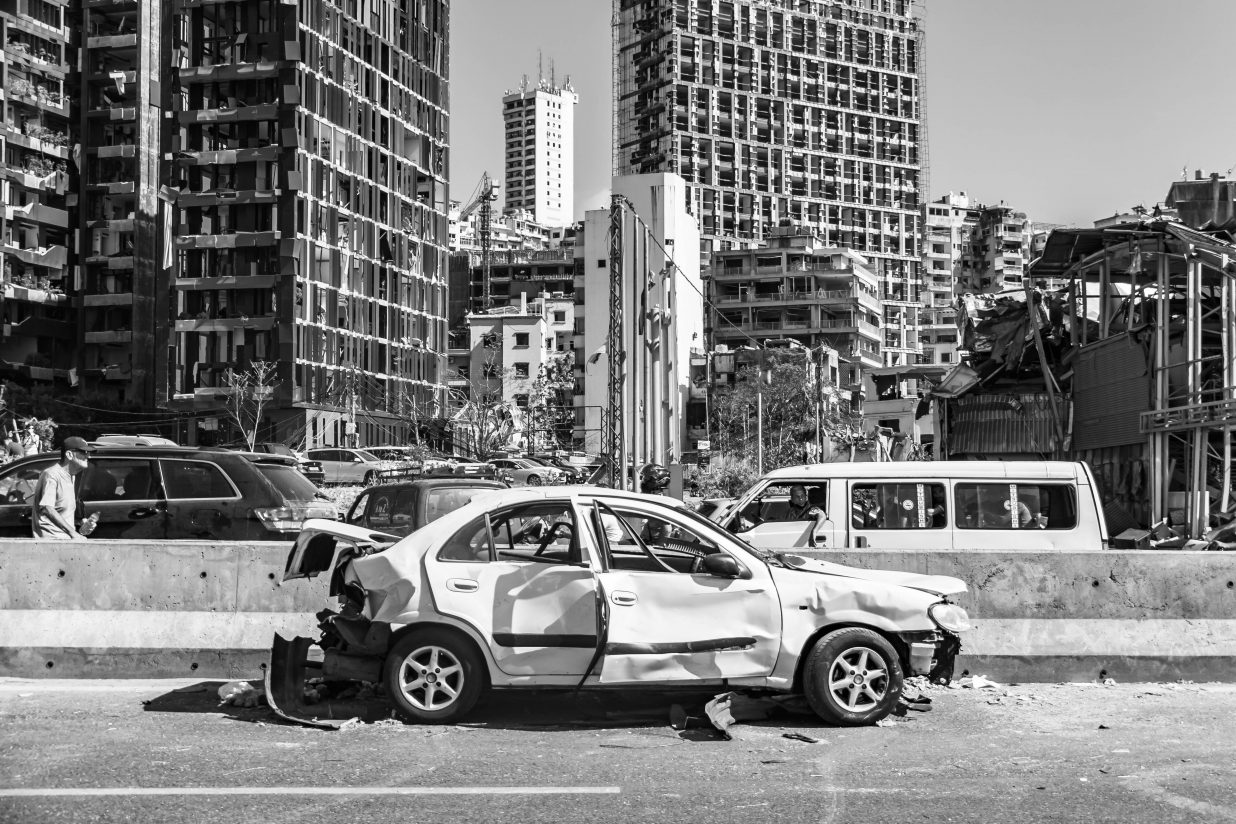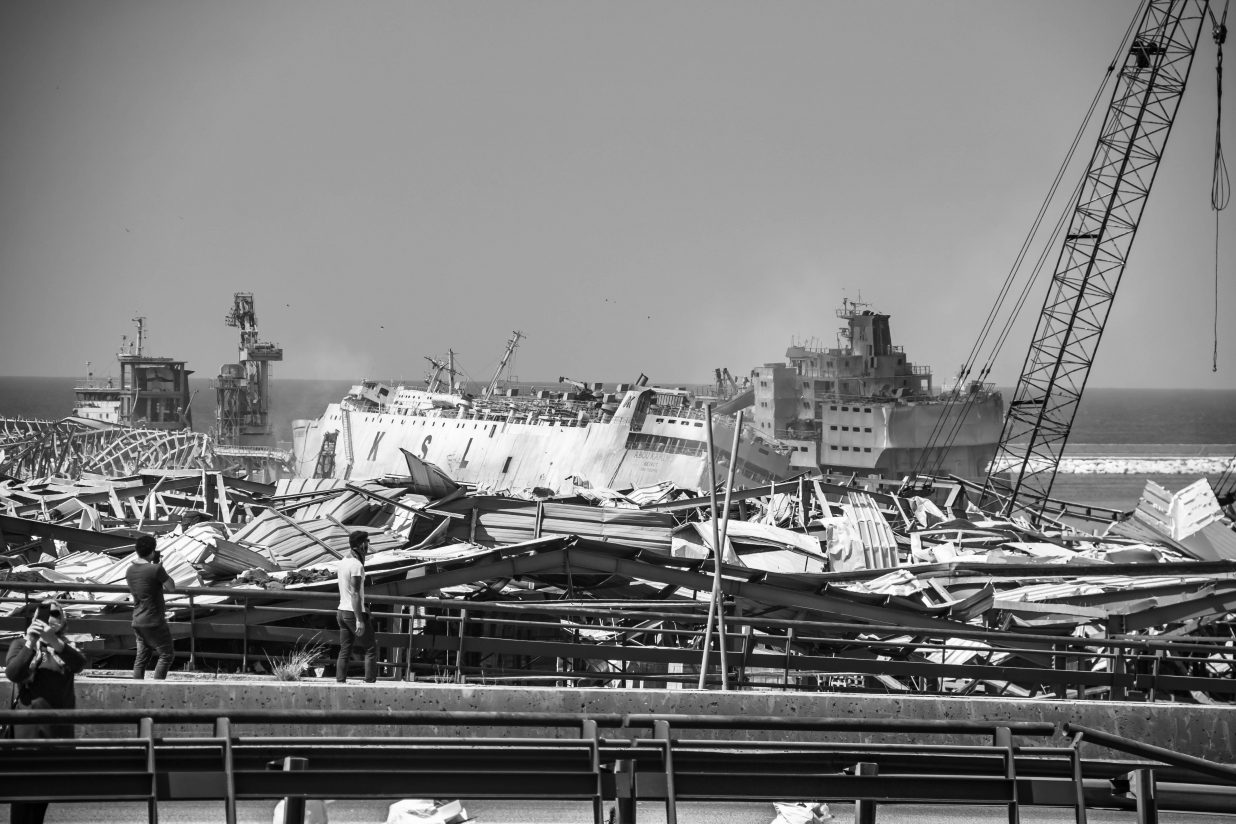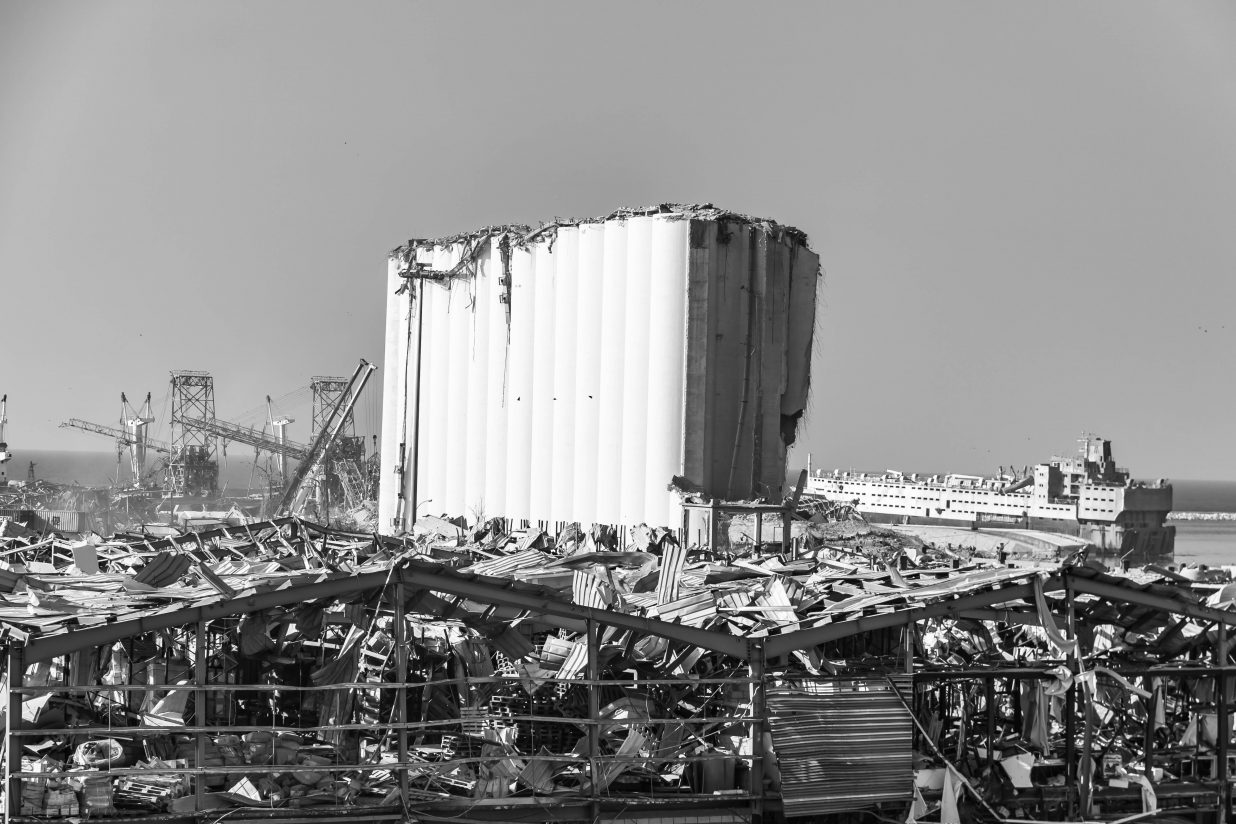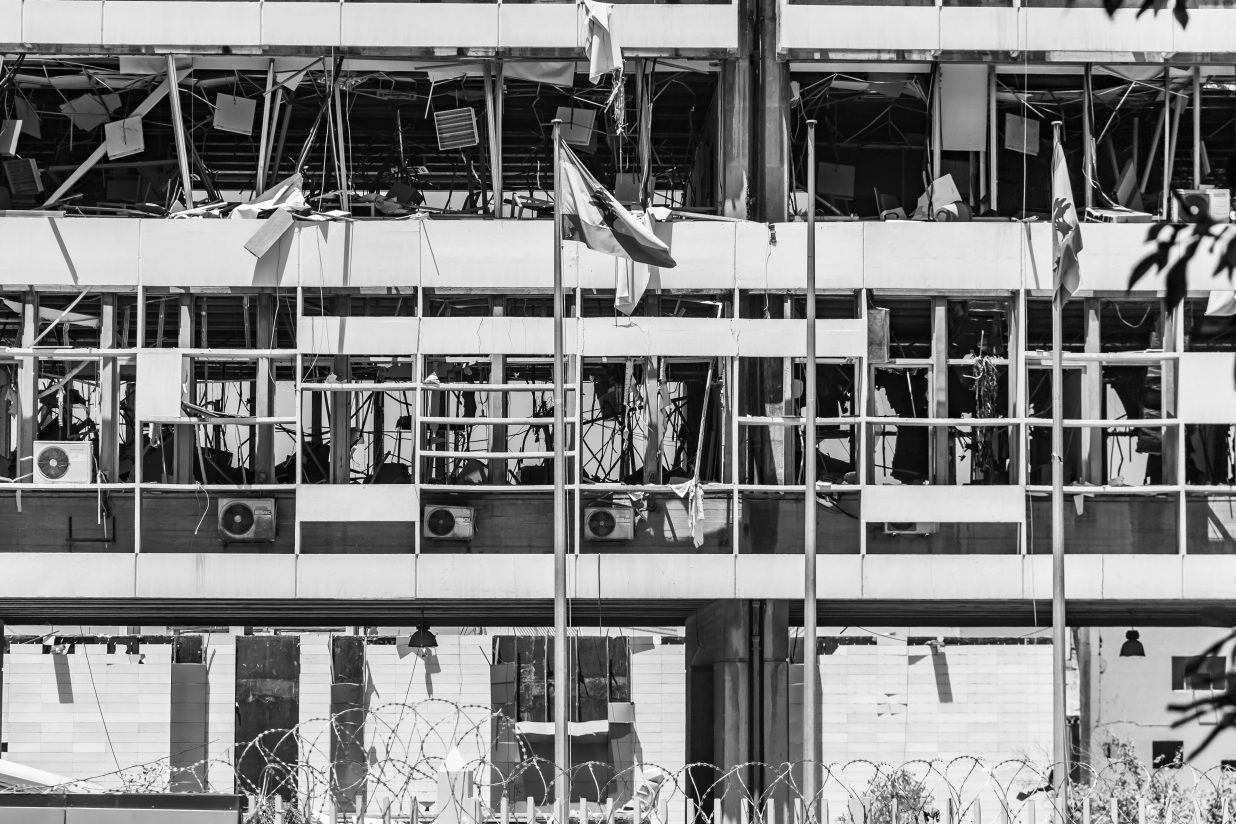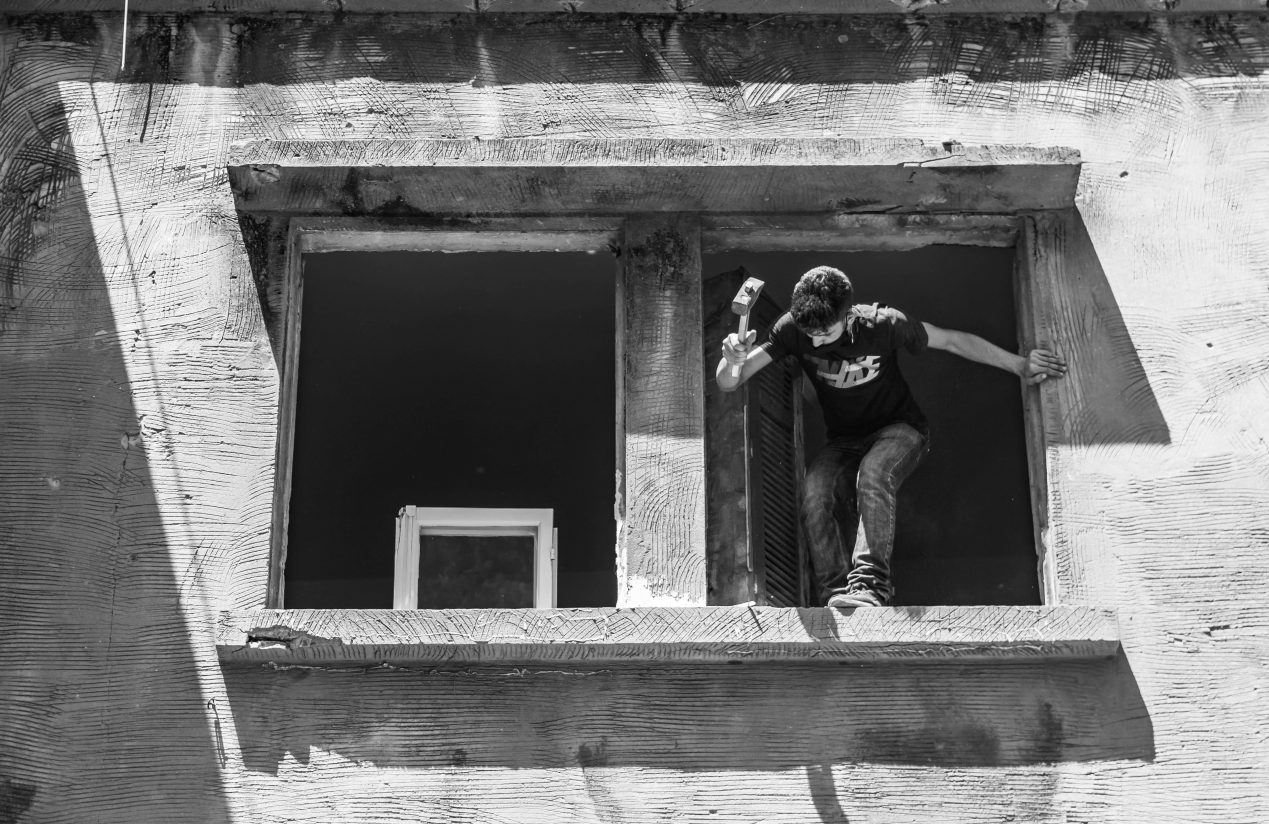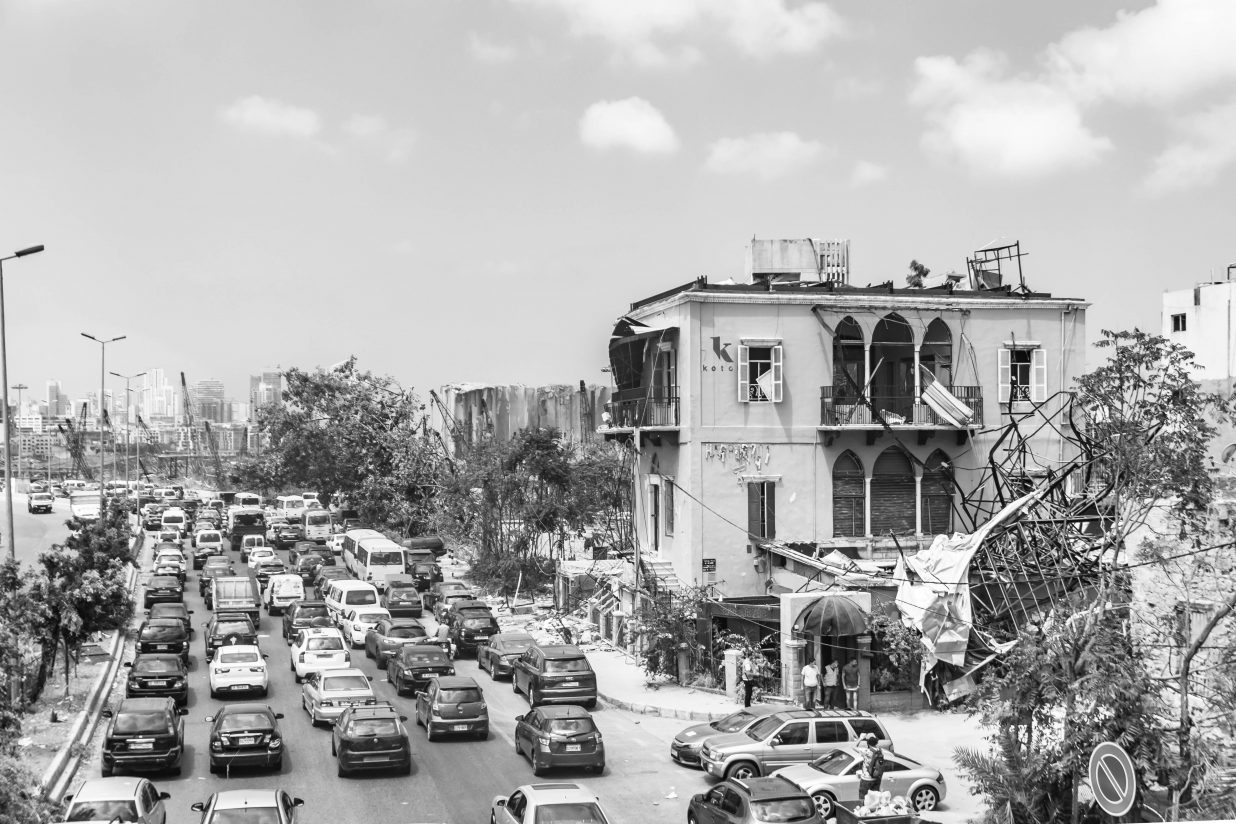Beirut: “Our Space is Destroyed but We are Not”
The architecture of Beirut might be falling apart after the dreadful blast on August 4 that maimed the city but the spirit of the Lebanese people lives on…By Sindhu Nair
“Our space is destroyed but we are not”. So says Nada Debs as she stands in the midst of the rubble that is now her studio. Her studio that was once filled with beautiful carpentry works inscribed with inlay work is now not different from the other shops around as it is to every other structure in the near vicinity of Gouraud Street in Gemmayzeh. Shattered glass form a fine layer on the floor like dust within every building. The streets, architecture, art, and the cultural scene of the city have crumbled in with the huge blast on 4 August, when 2,750 tons of ammonium nitrate stored at Beirut’s port blew up, obliterating the city’s main commercial hub and damaging large parts of the Lebanese capital. The blast, the most destructive in the country’s troubled history, killed more than 170 people, wounded more than 6,000, and caused damage worth $10billion-$15billion. But the wounds are much more than physical or monetary; the impact of the trauma continues.
Cynthia Bau Aoun, an architect in Beirut informs on her social media handle: “It is not a few typical Lebanese houses and street-scale buildings with three-arcades and a red roof that we lost, it is mostly an urban fabric, a social one. We have lost our street scapes and communities, a neighbourhood where we live, work, and gather. A space where heritage and modernity collaborate and cohabitate, where we had the largest clusters of architectural heritage continuously struggling to escape and survive gentrification.”
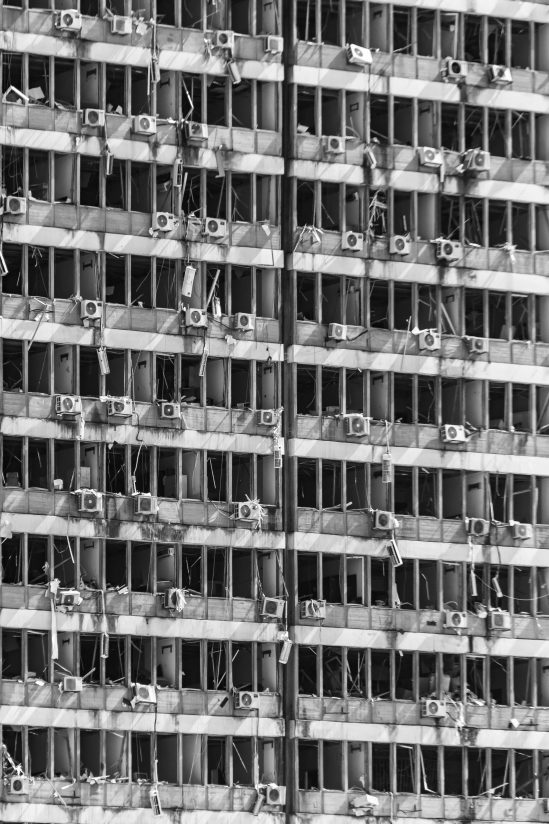
Corrupted Patterns represents EDL (Electricite Du Liban), an architectural masterpiece but also a pioneer of corruption consolidated in one building. Framed in this image, is a facade that portrays the destruction caused by the Port explosion. Corruption also corrupted itself, says Karim Nasser who has put this picture up for sale with the proceeds directed to rebuilding Beirut. For the link to buy this picture, check the bottom of the page.
Karim Nasser is a young architect, and a photographer whose soul-stirring images on Instagram is a reflection of the emotions he and many Lebanese are enduring; pain and shock that has slowly permeated to anger at the authorities for their ineffectiveness and irresponsibility which has paved way for this catastrophe.
He describes the part of Beirut that he will miss most: “I wish I could talk about one part of Beirut, but the entire city has been affected. The disaster has caused massive building damage and destruction on an urban level. Personally, my favorite sight of Beirut was the Port cranes and the Silo as a landmark and an icon of connectivity, production, commerce, and success. Beirut in its essence is a Harbour city. It was built around the centre of the Port. The port is the womb of its birth.”
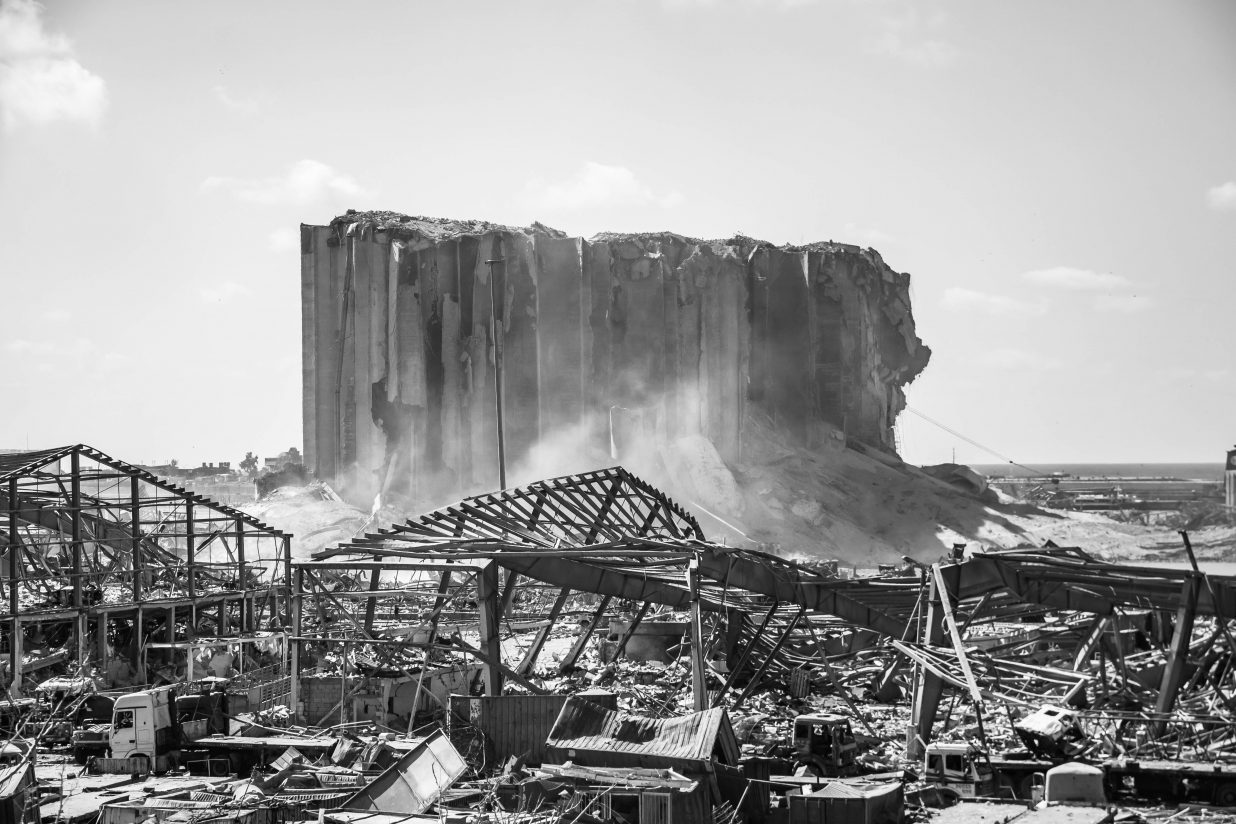
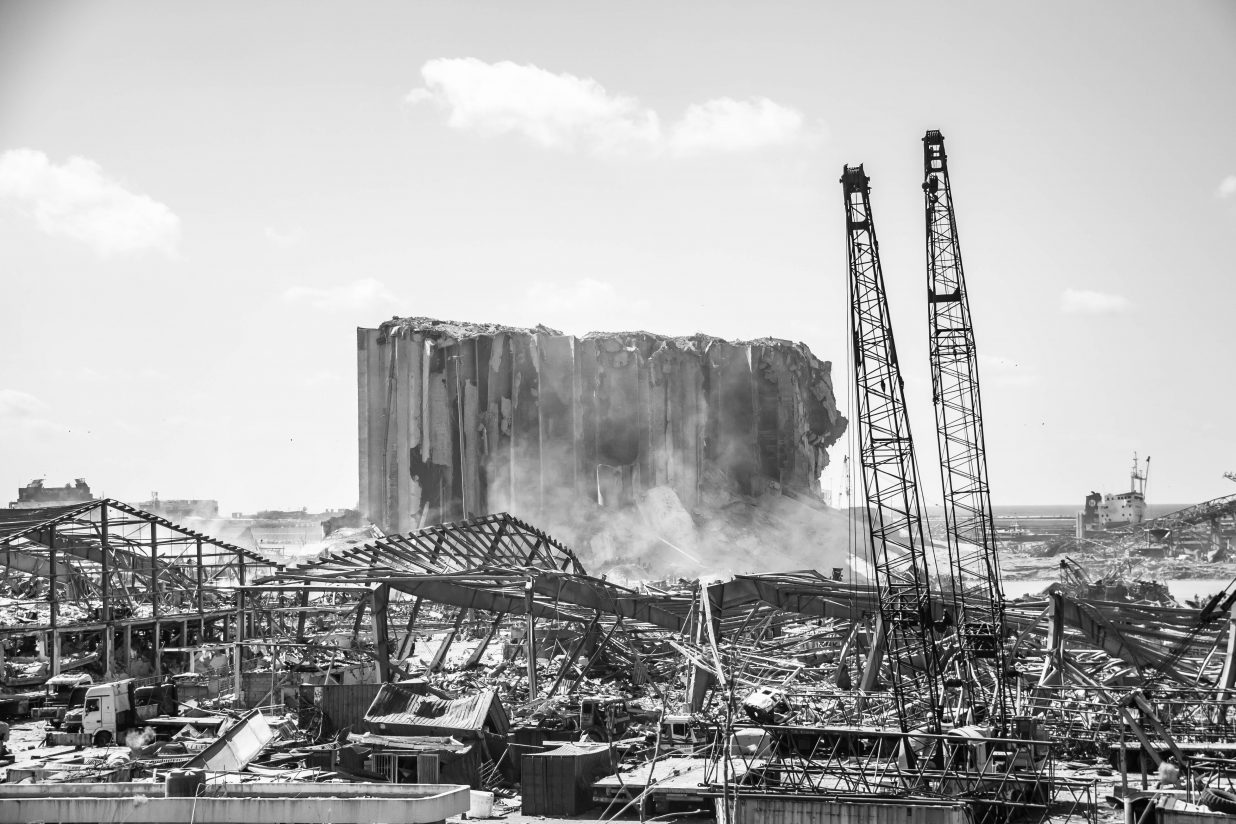 And it is this womb that was the crux of the blast; the remnants of the Silo stand disconsolate as a reminder of the follies it carried within.
And it is this womb that was the crux of the blast; the remnants of the Silo stand disconsolate as a reminder of the follies it carried within.
“The neighbourhoods right across the port, Mar Mikhael and Gemmayze are distinct neighbourhoods of Beirut on many aspects: it is the only geopolitically neutral street in the city. They also contain one of the oldest heritage buildings in the country. These buildings date back to Roman times and constitute an essential part of the cultural and built heritage of Lebanon. Unfortunately, all heritage buildings within a three-kilometre radius of the impact point are at risk of collapse,” says Karim Nasser.
The United Nations’ cultural agency quoted on Washington Post that it will lead the international campaign for the recovery and restoration of Beirut’s heritage, citing local officials who said that around 60 historic buildings in the Lebanese capital were at risk in these areas.
A Past Ridden with Bullet Holes and Capitalist Gains
The Lebanese capital has not had an easy past preserving its architectural heritage. Beirut which was once called the “Paris of the Middle East” was now home to many derelict buildings and many historical landmarks were already in the process of being demolished as modern skyscrapers took their place in the city. Having withstood 15 years of civil conflict and nearly two decades of rampant “reconstruction,” Beirut’s heritage buildings hang on to its structure, a bare skeleton of its earlier magnificence, proudly flaunting bullet-riddled stone facades and decaying wooden structures. Many historic buildings have been demolished and replaced by towering apartment blocks.
With this blast, what is remaining is unrecognisable. Sarkis Khoury, director-general of antiquities at the Ministry of Culture in Lebanon, has said that at least 8,000 buildings concentrated in Gemayzeh and Mar Mikhael, were affected. Among them are some 640 historic buildings, approximately 60 of which are at risk of collapse.
The economic backlash has left many on the fringes. Architects are people who are specifically sensitive about their environments, cities, and built environments. According to Karim Nasser, architects are constantly in flux, operating between the fine lines of consumerism and morality, and in Beirut, these polarities are even more extreme.
“Even before the explosion, owning an architecture studio is difficult on a pragmatic and moral level. You are forced to operate in an environment that is governed by capitalist forces rather than spatial and environmental quality. This poses a moral dilemma to small studios who are passionate about Beirut’s rich architectural history: do I resist the system and struggle to make ends meet? Or do I cave into the system to feed my family? This dilemma will be further reinforced during reconstruction. It may lead to the most beautiful outcome or the most disastrous ones,” says Nasser.
Tara and Tessa Sakhi, sisters and design professionals who own the multidisciplinary architecture and design firm, T Sakhi says, “With what we had left from trying to protect from real-estate promoters wanting to demolish our heritage buildings, today we are faced with another challenge, trying to rehabilitate the huge damages due to the explosion and making sure that no landlord will sell his ‘ruins’ to promoters. Seeing the deep economic depression that Lebanon faces, we are faced with testing times.”
Hope comes with the Citizens
As in every crisis, human resilience and empathy win over petty politics and corrupt governments. Within hours after the destructive wave, an upsurge of humanity rose as if to brace those suffering from further loss.
Young architects and numerous NGOs have already taken to social media to initiate reconstruction. Nasser and many architectural practices are immersed in helping people back on their feet, salvaging what can be built for immediate shelter.
“The people of Lebanon are now consolidated and in coordination with each other. This allows us to work together as one force which is more powerful than the government. People and NGO on the ground are collaborating not to duplicate efforts, but to centralize data collection and management, and to allow for much more efficiency. We are doing the work that is supposed to be done by the municipalities. We will reform, draft new laws, we are the ones who will rebuild our city with our own hands,” says Nasser, echoing the sensibilities of the public.
“The reconstruction of the city is the most important topic now. It is a chance for us to do things right, most important is to keep the city safe from the capitalist, corporations, and people who are actually competing against each other for data collection, for monetary benefits and who put the preservation of our heritage and identity at risk,” he says.
“What is lacking today is a bigger entity that would organize all these small institutions to be able to advance efficiently in the re-construction of Beirut,” says Tessa of T Saki. But people seem to have taken on that role in Beirut.
Many non-governmental associations have called for architects, engineers, designers, contractors, and suppliers to come together to re-build Beirut, to re-cycle materials like the shattered glass, the deformed aluminium, wood, and so on. The first step is assessing the safety of the structure of these homes, then comes the phase where architects and interior architects step in to help conserve these buildings.
Karim Nader is a renowned, sought-after architect who loves working on heritage buildings and involves himself in architectural practices that are soul-stirring. His office building is located directly in the Port area and his office is completely destroyed. Thankfully none of the staff were injured. Sitting at his home desk, Karim Nader has already started to dream of the new Lebanon.
“I have often talked about this paradoxical idea of an emanation of energy that follows a total collapse. It has a saving quality that inspires us to joyfully return to work. Now I sit, once again at my home-desk (there is no Beirut office for the moment, but the studio team are all alive. Hamdulla!) looking at the family garden in the afternoon, the sun through the leaves after a day of unnatural rain in the middle of August. I have already started to dream the new Lebanon that will follow this now totally depleted one, indeed in ruins for the last few decades before its physical destruction on the 4th of August and I will joyfully participate in its reconstruction,” he says.
“Picking up the fragments fallen on the ground, we will dust them out and try to figure out the exact location of every remaining puzzle piece. But the fragments are in exquisite disorder and many pieces will forever stay missing. In those gaps, we will repair with pure gold, like in the art of kintsugi. (The 400-plus-year-old Japanese art of kintsugi (golden repair) or kintsukuroi (golden joinery) is a pottery repair method that honours the artifact’s unique history by emphasising, not hiding the break.”
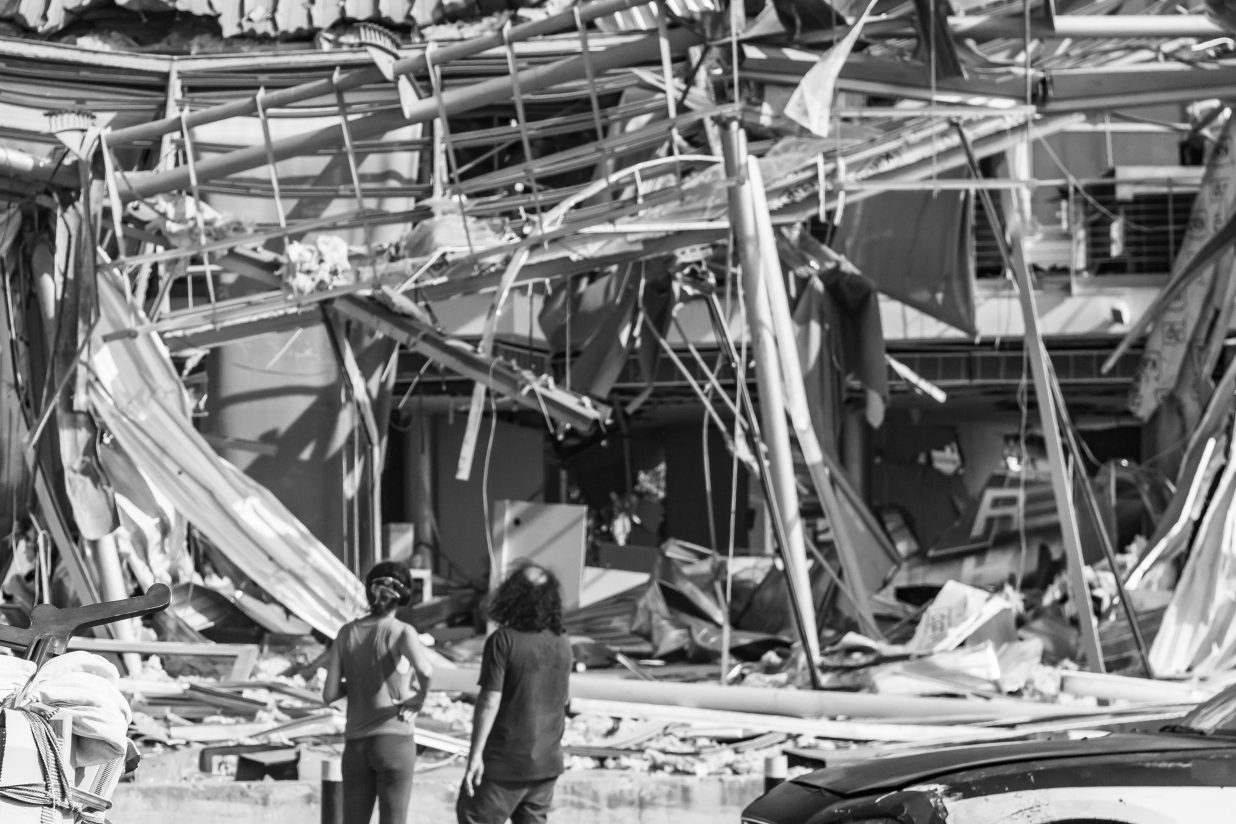 “We will accompany the citizens in their aspirations for a better tomorrow through the reconstruction of an even more beautiful Beirut, one that has transcended the ruin of a past now lost forever. Bricks never matter. What matters is to build on firmer humane grounds a city and an architecture that the next generation will be proud to call ‘My homeland’.”
“We will accompany the citizens in their aspirations for a better tomorrow through the reconstruction of an even more beautiful Beirut, one that has transcended the ruin of a past now lost forever. Bricks never matter. What matters is to build on firmer humane grounds a city and an architecture that the next generation will be proud to call ‘My homeland’.”
Rebuild Beirut is a social initiative that connects people in need with donors and volunteers to build back destroyed homes, one home at a time.
For associations that help Lebanon build back its homes and its urban fabric, connect and help: @rebuild_beirut, @rebuilding.gemmayze, @baytna_baytak, @ziad_abichaker, @bebwshebbek.
To buy images, connect to this social initiative that sells prints from local Lebanese artists with all proceeds going to an NGO. Each print sold will help a family of 5 for a month with basic food.


